There’s nothing worse than being in the middle of a recipe that calls for sour cream and opening up the tub only to find it’s almost empty or worse- there’s mold all over it. Luckily, if you’re out of sour cream, you can make your own! All you need is two ingredients and a lot of upper body strength. (I’m exaggerating about the need for muscle tone. I can do it, and I haven’t worked out since the 90s.)
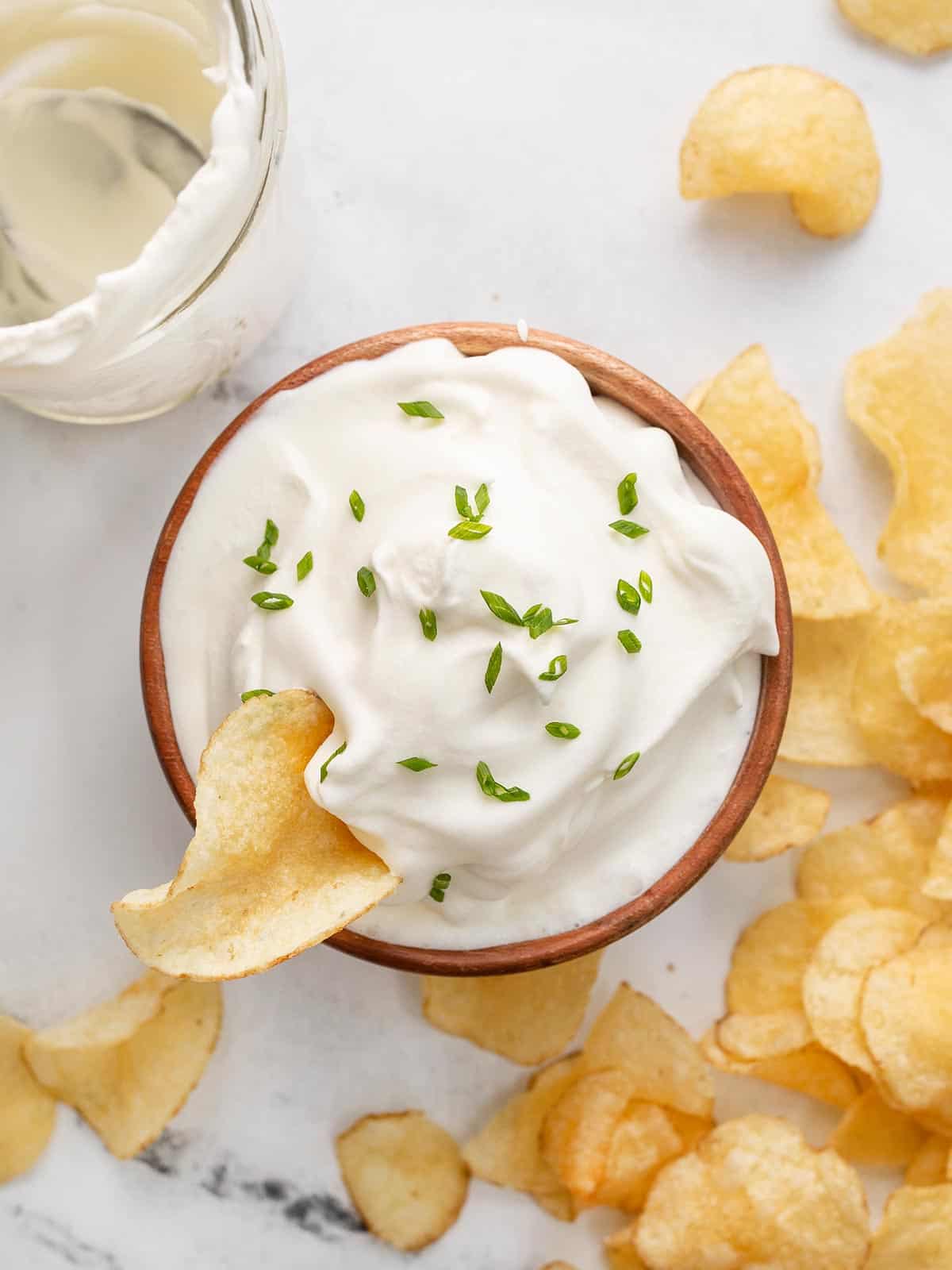
This post contains some affiliate links, which means that we make a small commission off items you purchase at no additional cost to you.
What is sour cream?
First things first- there are two types of sour cream: cultured and acidified. Without getting too sciency, cultured sour cream is made with bacteria, while acidified sour cream is made with an acid. Fun fact: many store-bought sour creams aren’t made from cream at all. They’re made with milk that’s thickened with artificial ingredients. Homemade sour cream doesn’t have artificial thickeners so it will be a little runnier than what you’re used to, but the flavor will be spectacular!
Making Sour Cream From Scratch
Since you probably don’t have a vial of lactic bacteria in your pantry, you’ll need heavy cream and an acid. I like using vinegar, but you can also use lemon juice or buttermilk. You’ll also need a mason jar or another air-tight container. To make sure the container is squeaky clean, boil it for a few minutes, let it cool, and then add your cream and acid. Then cover and shake it (or blend it) until it thickens. That’s it. You’ve made sour cream.
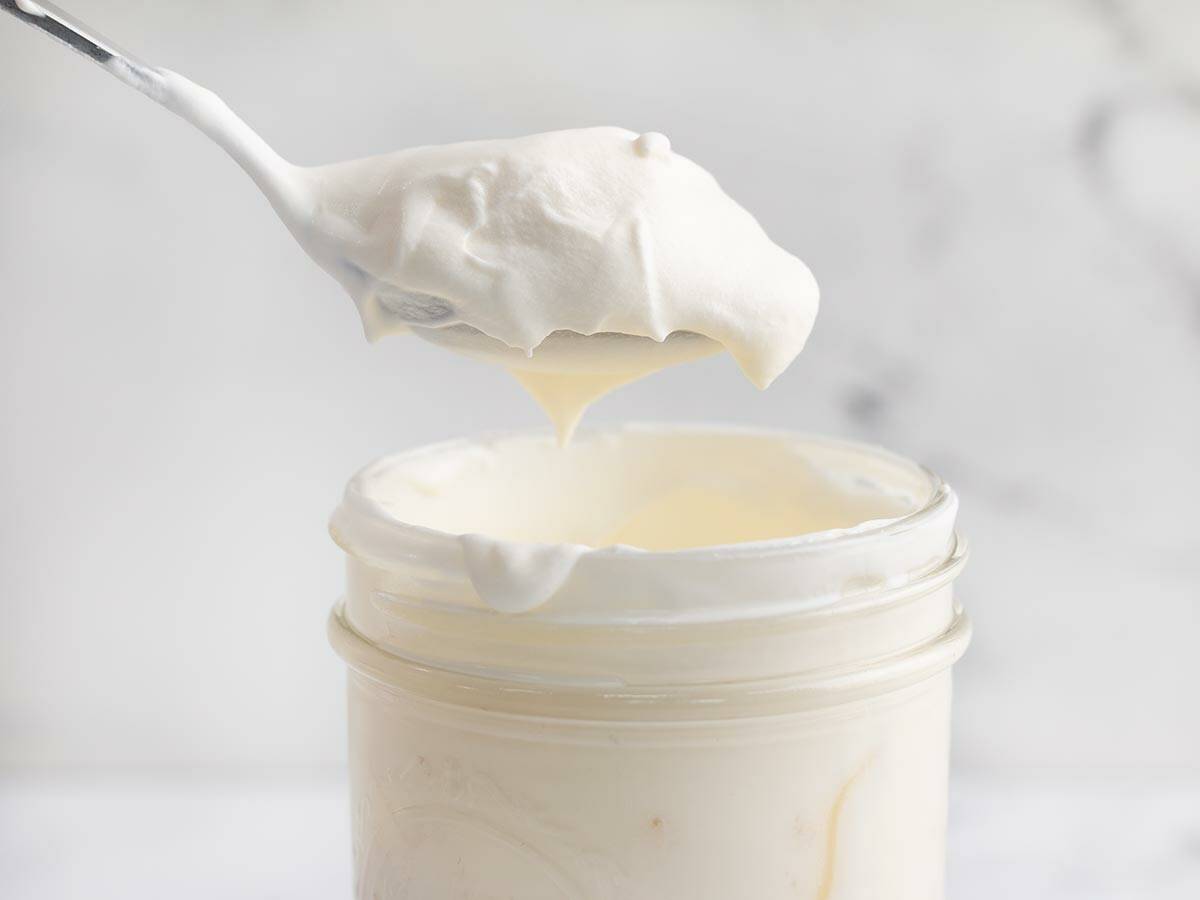
To Ferment Or Not To Ferment
I’m a pretty impatient person, so if I’m using the sour cream for a batter or a dip, I add it a few minutes after I’ve made it because its primary purpose is to add creaminess and flavor. It’s not the star of the show; it’s a background singer. (Like the one chick in Destiny’s Child whose name no one ever remembers.) Now, if it’s the Beyonce of your dish, you’ll want to let it sit for a day on your counter to let the cream ferment and thicken and then refrigerate. To keep it 100, I usually skip fermenting it and just put it in the fridge to thicken overnight. It still tastes great.
How long does it last?
That depends on you. It’s best to store the sour cream in the back of your fridge, not the fridge door, where temperatures fluctuate. If you clean your container well and keep the sour cream at 40 degrees, it should last about two weeks. To keep it fresher longer, store it upside down so it isn’t affected by air. When the cream falls to the lid of the jar, it creates a vacuum, which slows down mold and bacteria growth. You can use this nifty trick on all dairy products that come in a container or a jar. I’m looking at you, cottage cheese.
Some of the things you can make with sour cream
Don’t limit your sour cream to just a topping for baked potatoes or a heap of nachos. It works magic in all sorts of dishes. You can use it in sweet and savory preparations to add tang, moisture, and tenderize. It’s the little cream that could.
- Use it to make frostings and sauces like in this Lime Crema.
- Use it for spreads and dips like in this Hot Corn Dip.
- Use it for dressings like in this Creamy Cucumber Salad.
- Use it to thicken sauces like in this Creamy Salsa Chicken Skillet.
- Use it as a topping for soups like in this Pumpkin Soup.
- Use it to tenderize and add tang to proteins and baked goods like in this Sweet Potato Cornbread.
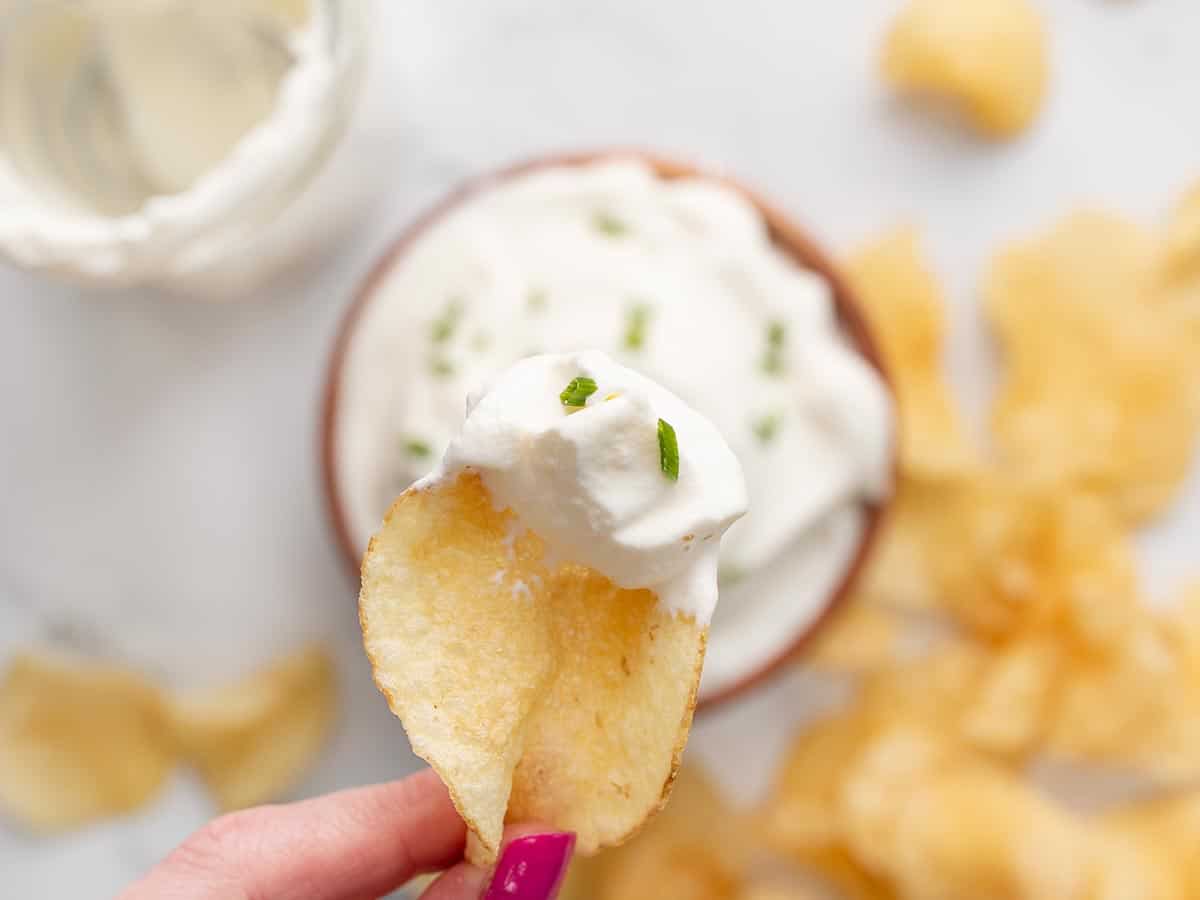
How To Make Sour Cream
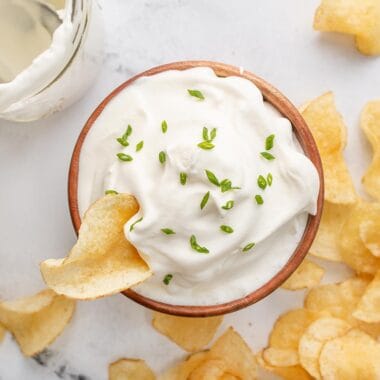
Ingredients
- 1 cup heavy cream ($1.40)
- 1 Tbsp vinegar ($0.02)
Instructions
- Add the cream to a mason jar or other airtight container.
- Add the vinegar to the cream. (Or whatever acid you decide to work with.)
- Close the container and shake it for a minute or two, until the cream thickens.
- Use the cream right away or leave the jar on your counter overnight to ferment and thicken.*
See how we calculate recipe costs here.
Notes
Nutrition
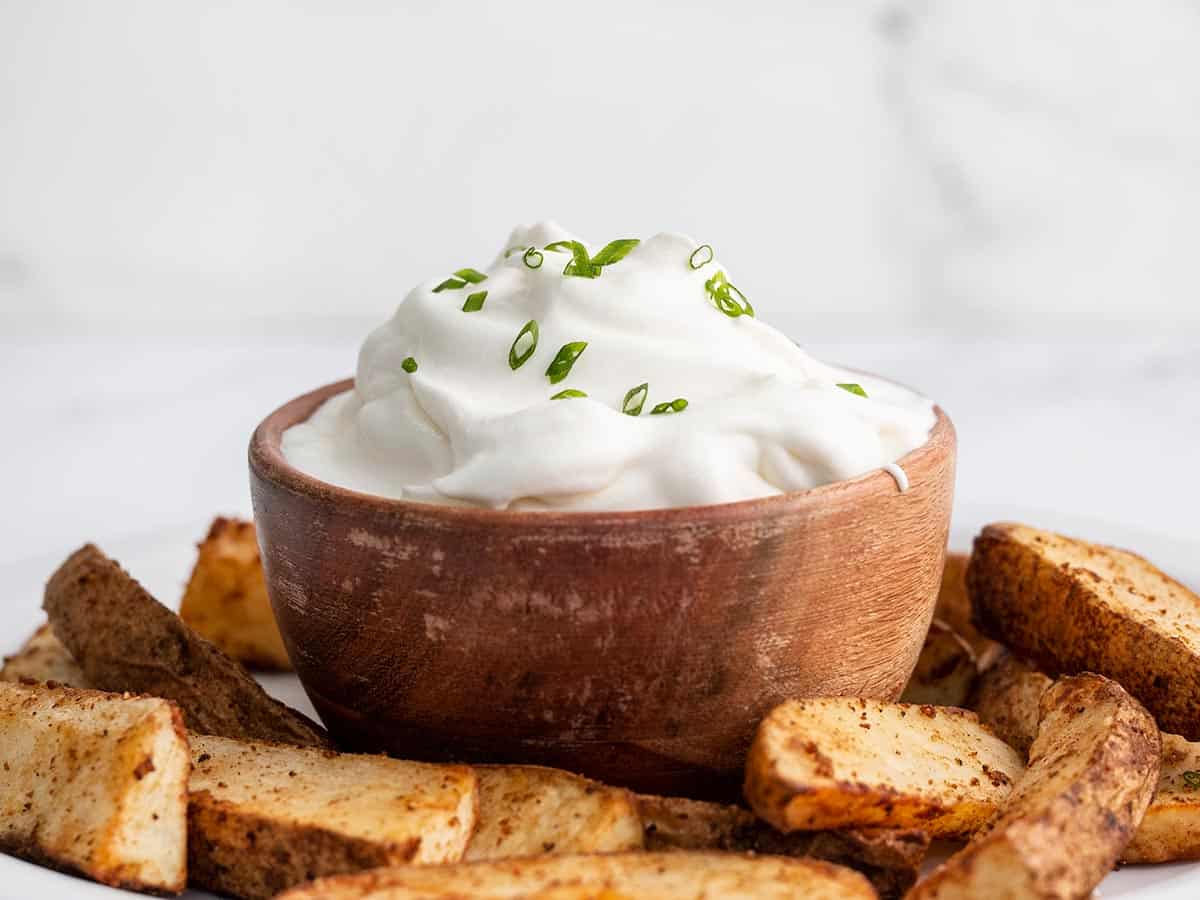
How to Make Sour Cream – Step by Step Photos
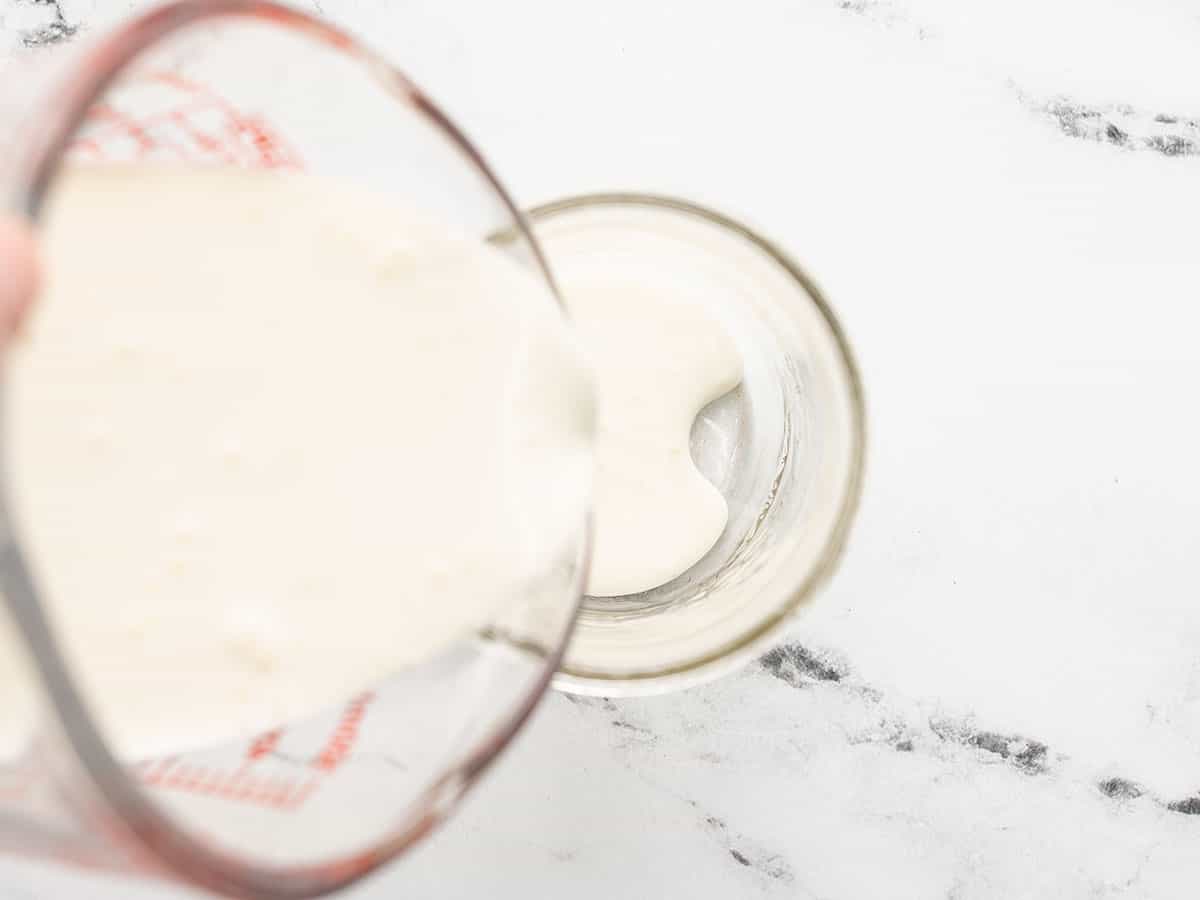
Add the cream to a mason jar or other airtight container.
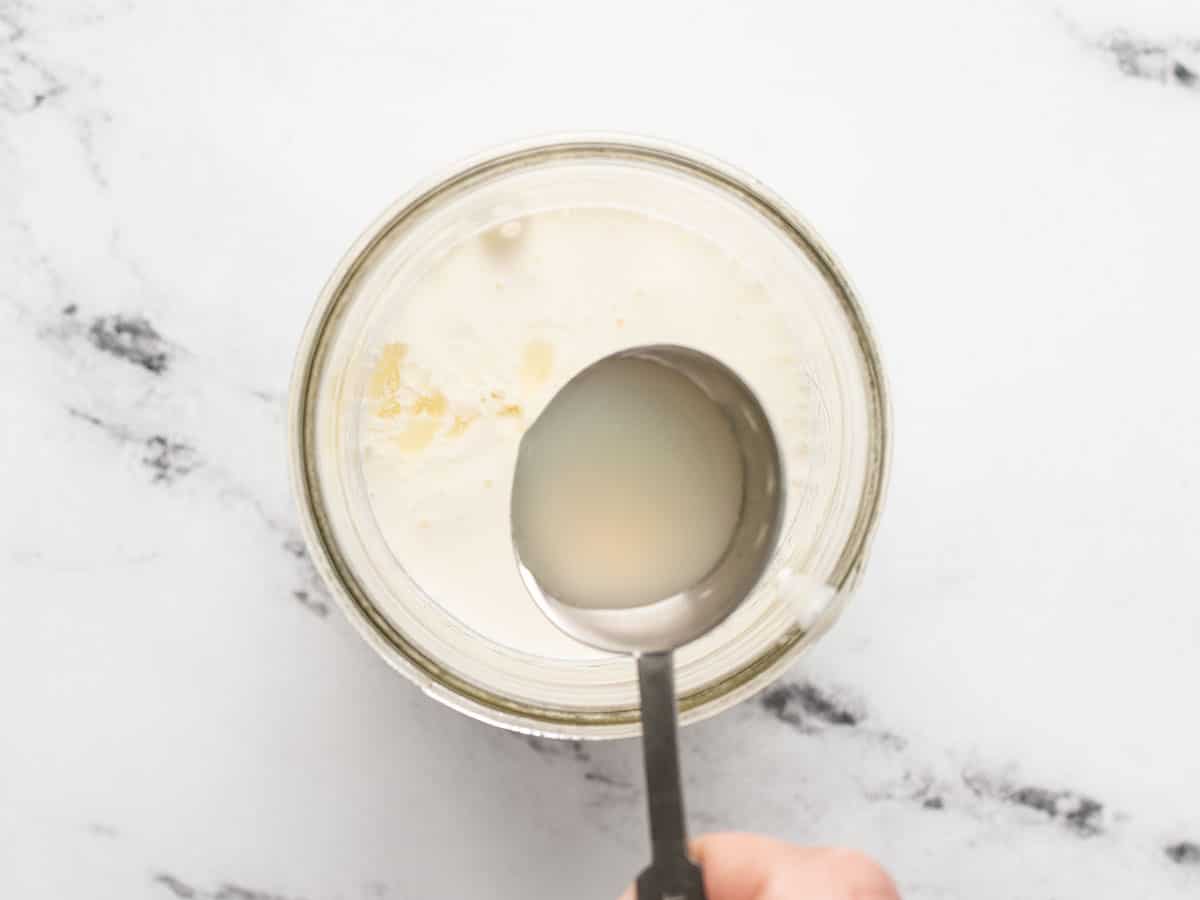
Add the vinegar (or lemon juice) to the cream.
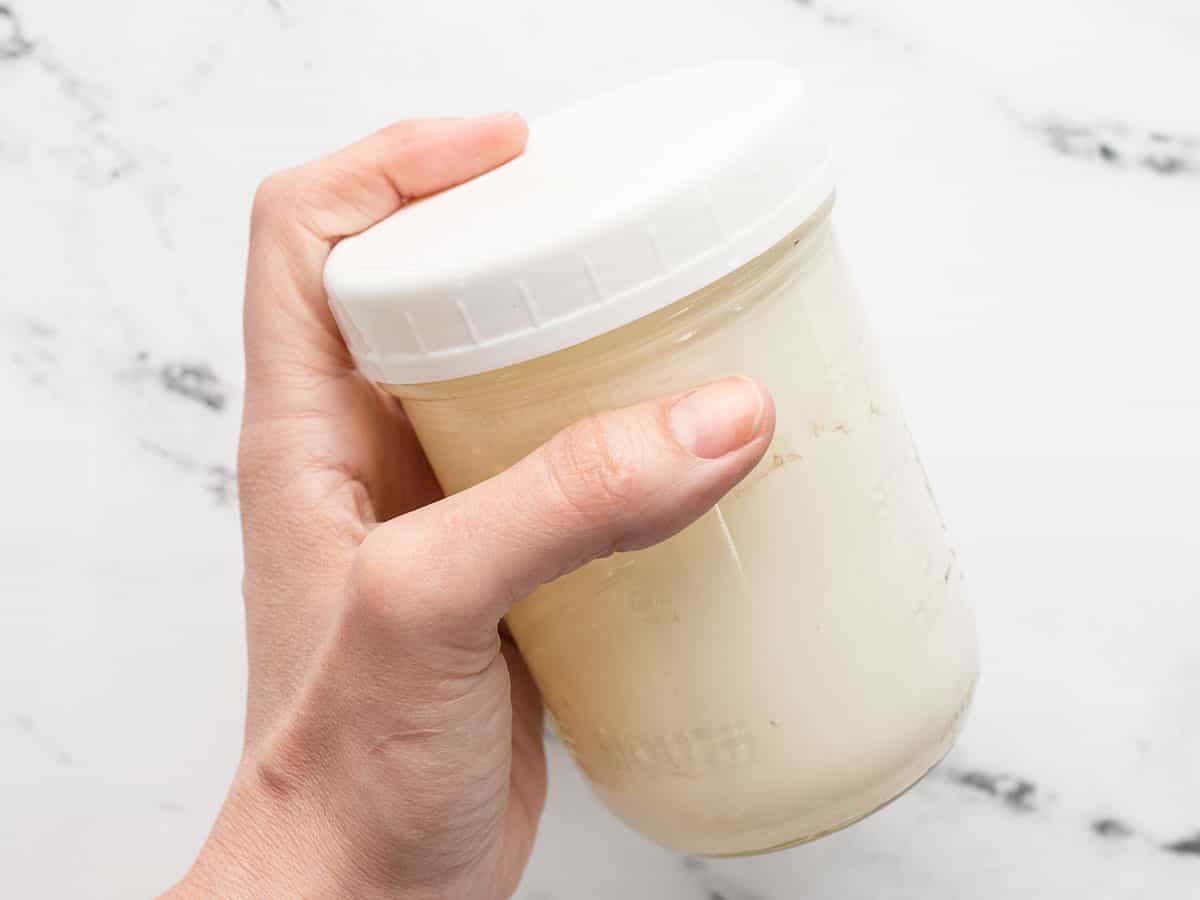
Close the container and shake it for a minute or two until the cream thickens.
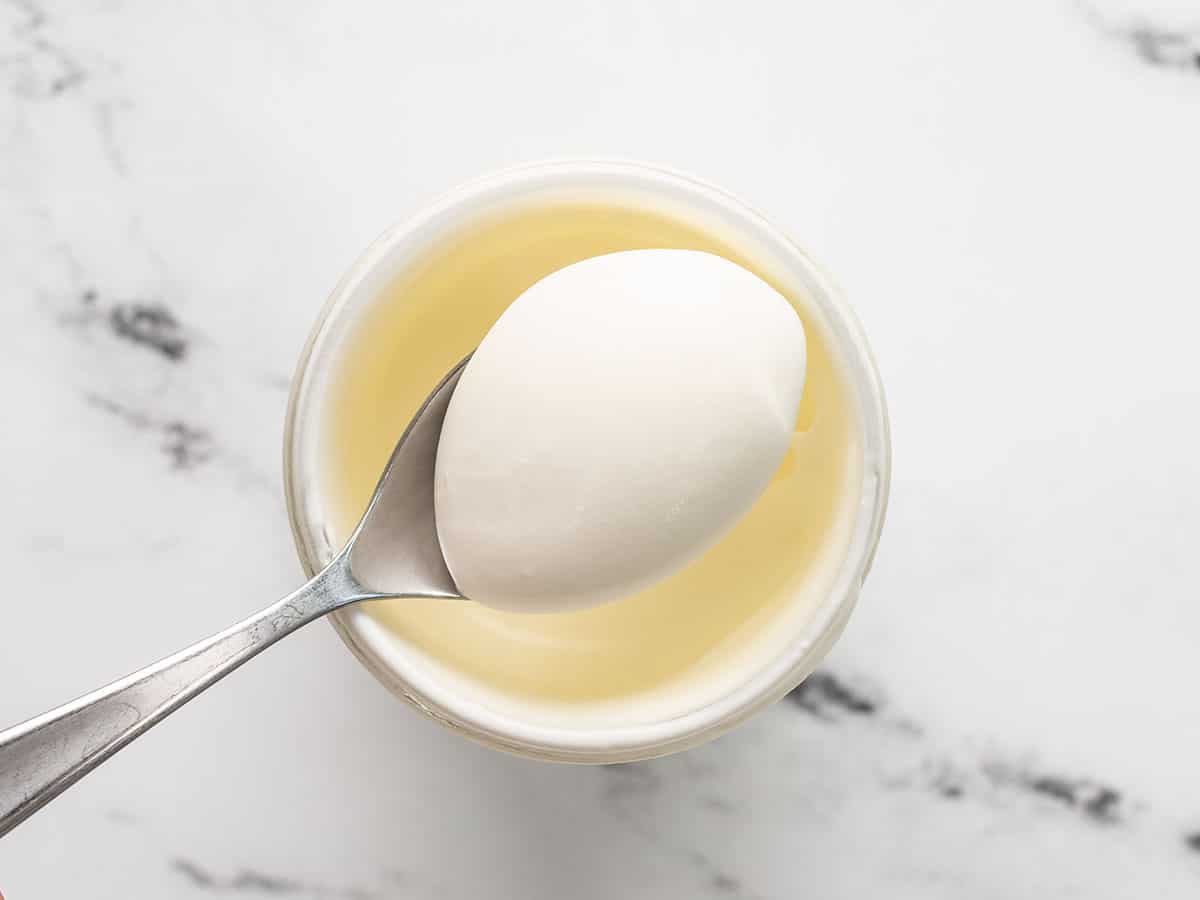
Use the cream right away or leave the jar (with the mouth covered in cheesecloth or other lightweight cloth and secured with a rubberband) on your counter overnight to ferment and thicken.
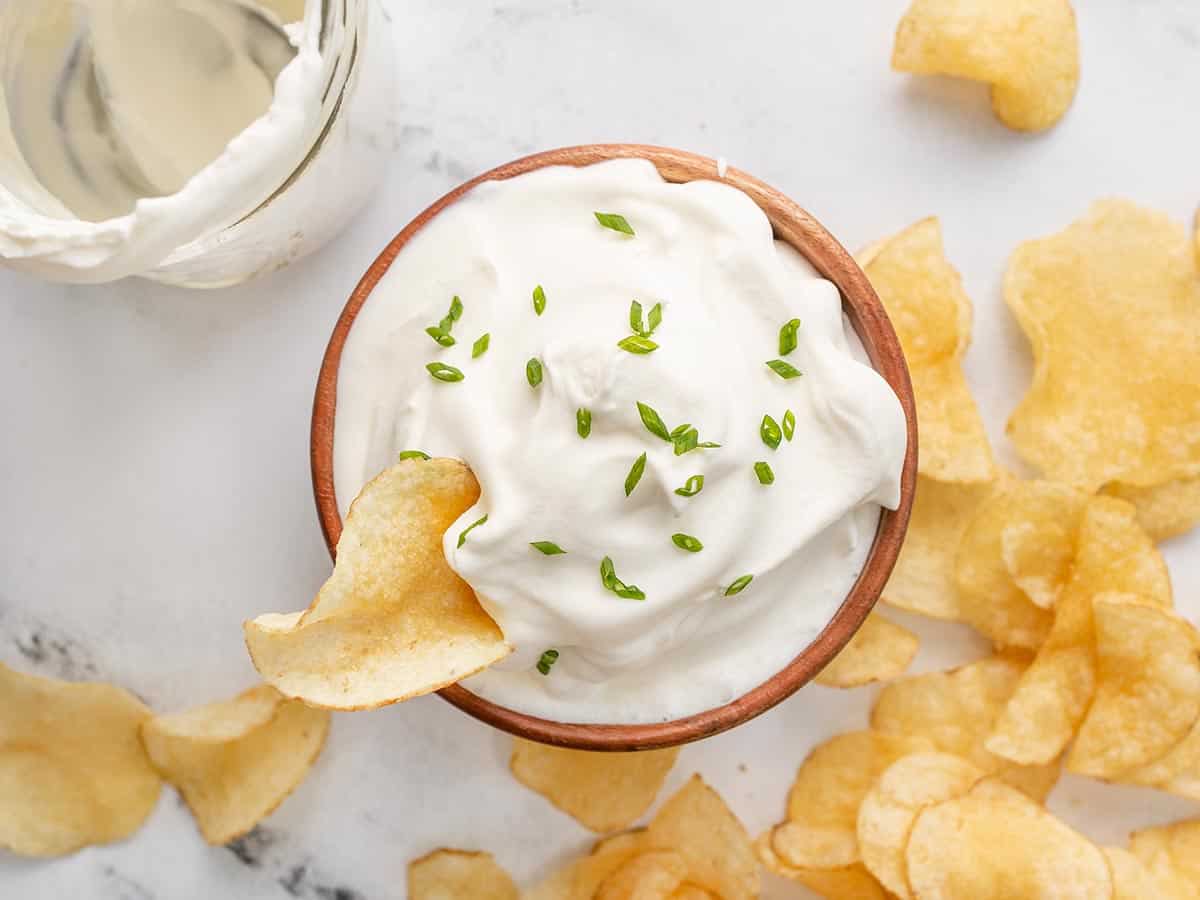
Now your deliciously fresh homemade sour cream is ready to use in your favorite recipe!


Great recipe! I used a cuisinart hand held stick mixture and it whipped up almost instantly. Tasted good, covered lightly with plastic wrap and put in fridge for chili.
What kind of vinegar apple cider or white distilled? Or doesn’t it matter?
White distilled! But you should be able to do ACV as well.
I’ve tried the ones where they add milk, not do good! This is the easiest and has the thickness I love!
I tried this out for the first time to go along with the slow cooker taco chicken bowls, as I now live somewhere I can’t access lactose-free sour cream. Thank you! I used unfiltered apple cider vinegar, as that is your best bet for getting a vinegar that will ferment anything, and it didn’t add any perceptible off flavour.
If you are on the west coast of America and lactose intolerant, look for Green Valley Organics brand – their fermented products are fantastic, and along with Mexican food (and easily-found ingredients to make semi-authentic Mexican) are one of the very few things I miss after having relocated to the UK. ; )
Wonderful recipes!!
Thanks!
You can also do the old trick of making your own buttermilk for recipes with the lemon juice. Love how it starts thickening up immediately ❤️❤️❤️
So I finally tried this for a chili. I started with the original proportions and let it ferment overnight, in the morning the cream was still liquid. I put it in the fridge thinking that maybe it would thicken there but it stayed liquid. I added a tsp of vinegar and let it sit outside again for some hours, this time it thickened. The flavor is pretty ok, not as good as real sour cream as I can taste a liiiiiittle bit of white grape flavor from the vinegar but better than the alternatives (and low fat sour cream). I dressed it up as Beth’s lime crema for chili and now the grape vinegar’s aftertaste is underectable. I think it can be safely used in baking and even as a savory sauce with some dressings (es lime, garlic, chives, sweet chili sauce…) depending on the use. Or use as it is, I’m picky.
I’m curious. If I want to use buttermilk instead of vinegar or lemon juice, would I use the same amount? I definitely want to try this. I’ve been making ricotta at home and I definitely prefer making ricotta with buttermilk, even though I started making it using a combination of vinegar and lemon juice. Thanks for a great post, I appreciate it.
You can absolutely use buttermilk! One tablespoon per cup. It will take a little longer for it to thicken. XOXO -Monti
This knocks my socks off! I had no clue making acrid cream would be so natural. Like Rachel, interested kind of vinegar you suggest. I as of now have 6 options in my storage space. In spite of the fact that I’m speculating balsamic, malt, and red wine aren’t the most ideal decisions. Gratitude for this Monti! This is such a thoroughly Financial plan Bytes recipe.
Ornate Residence
Thank you so much for this message! I use distilled vinegar or lemon juice. Have fun making it! XOXO -Monti
Thanks for getting back to me so quickly. You’ve got a great site here, I’m sure I’ll be back again and again!
I really liked this immediately after making it but it got a lot worse (almost chalky) after sitting on the counter overnight – I chucked it and made a new batch fresh (delicious!). I’m not sure adding acid to cream will cause any fermentation because there’s no culture/bacteria to do the fermenting. From my understanding, the thickening that happens here happens because the milk proteins “unfold” or denature when they come into contact with acid.
Acetic acid bacteria are the primary bacteria that make vinegar and are present in all vinegar. The acids they create help denature the proteins in the milk. I’m unsure why it turned out chalky, though. Did you leave it in an open container with a breathable cloth covering the top and secured with a rubber band?
Though I hardly ever leave my sour cream out (I’m so impatient), I make creme fraiche in much the same way, by leaving it out overnight, and it’s never chalky. I’m flummoxed. Wish I had more answers for you. XOXO -Monti
Is it possible there are thickeners in your cream?
In the cream we used? No. XOXO -Monti
How long will it stay fresh in the refrigerator?
That depends on how you store it and how many people you have in your house that like to make meal decisions with the fridge door wide open. Store it upside down to create a vacuum so it isn’t affected by bacteria in the air, away from the door, preferably the back of the fridge, where it won’t be affected by temperature fluctuations- up to 2 weeks.
It doesn’t go bad overnight? Sorry I’ve never fermented anything myself but would love to try this!
It doesn’t go bad overnight. It’s a similar process to making creme fraiche. XOXO -Monti
I like it
Sour cream can be used as any kind of dough?
I’m unsure what your question is, as sour cream is not a dough. Could you clarify? XOXO -Monti
This blows my mind! I had no idea making sour cream would be so easy. Like Rachel, I’m curious what type of vinegar you recommend. I currently have 6 choices in my pantry. Although I’m guessing balsamic, malt, and red wine aren’t the best choices. Thanks for this Monti! This is such a totally Budget Bytes recipe.
Hi Jeri Ann! I usually reach for distilled white vinegar. It keeps the color a crisp white and doesn’t add too much tang. Thanks for trying it out! XOXO -Monti
Better if made using heavy cream and 1 tablespoon of sour cream. The sour cream is your mother starter.
This would make no sense—this is a recipe for sour cream. Why would be put sour cream in it?
I love this! Had no idea you could make sour cream, and the trick about creating a vacuum is fantastic. I don’t often need or keep sour cream around, but you’ve inspired me to experiment.
Woot!! XOXO -Monti
I made homemade sour cream once using yogurt (because finding sour cream in supermarkets in Italy is hard). It set and was fine, but tasted a bit like…yogurt, and so I’d use it in baking but maybe not as a topping in chili and such. How does the one made with vinegar compare?
It tastes like sour cream. SO not as acidic as yogurt. XOXO -Monti
I love it in mexican restaurants but I had no idea what it was made of and that it was so easy to make! Will surely try it
Question: what kind of vinegar would you recommend? I know different kinds of vinegar can have different levels of acidity and flavors so I’m curious…
Hi Rachel, I recommend distilled white. XOXO -Monti
You had me at two ingredients. You lost me at upper body strength ;-)
Wow! I’m kind of excited about this. 😄
Woot!! I hope you make it. XOXO -Monti